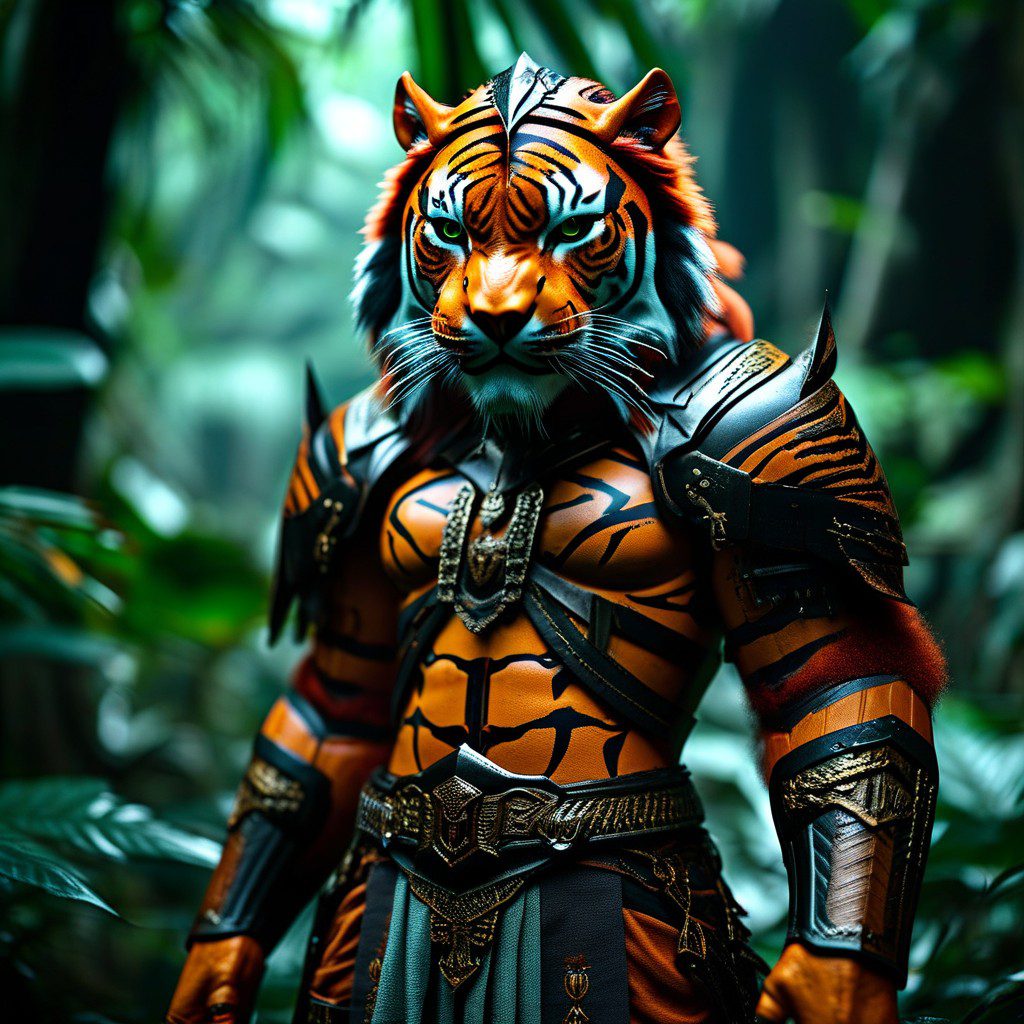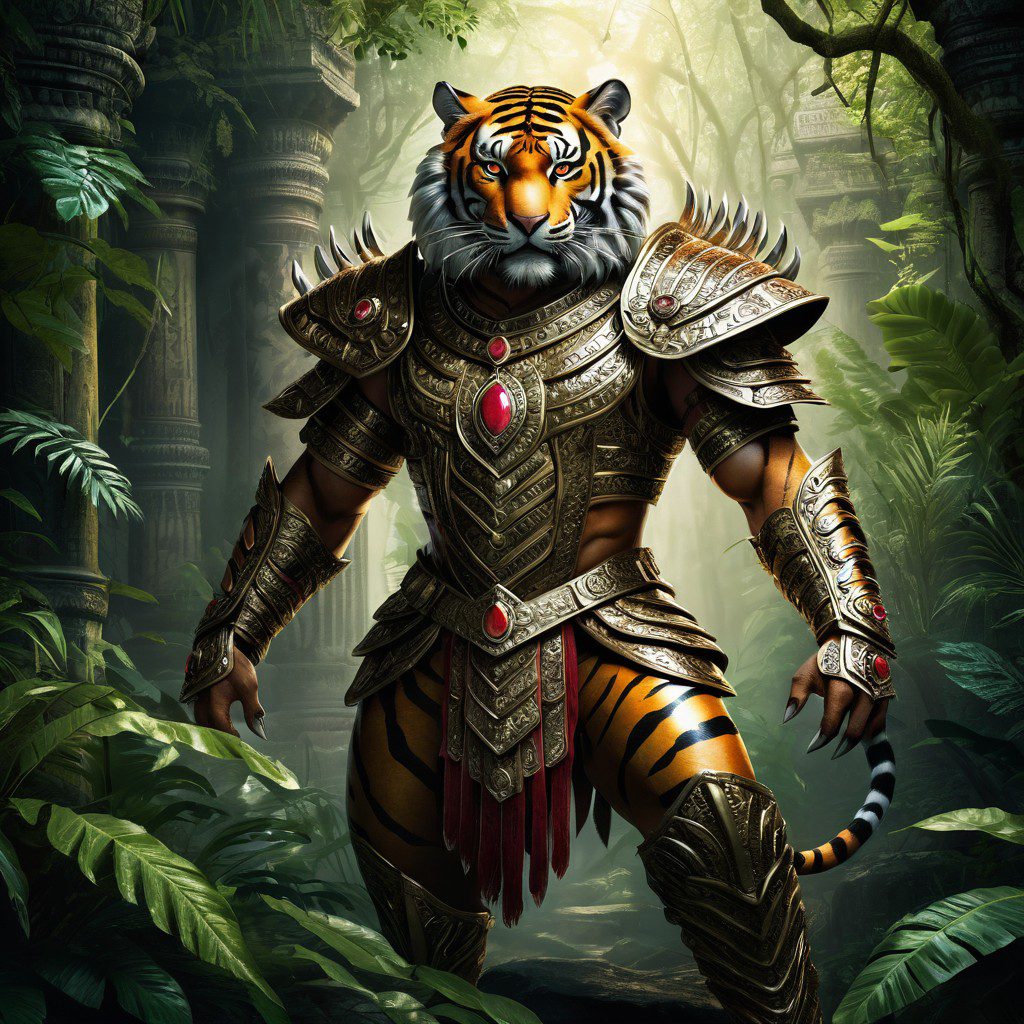Rakshasa: The Shape-shifting Demons of Hindu and Buddhist Mythology

In the shadowy corners of Hindu and Buddhist mythology lurk the Rakshasas, a race of powerful and malevolent beings known for their cunning, shape-shifting abilities, and insatiable hunger for chaos. Often depicted as fierce and devious demons, Rakshasas play complex roles in ancient epics like the Ramayana and Mahabharata, where they are cast as both formidable foes and nuanced characters capable of both good and evil. Known for their grotesque appearance and magical powers, the Rakshasas embody humanity’s deepest fears of deception, darkness, and corruption.
In the shadowy corners of Hindu and Buddhist mythology lurk the Rakshasas, a race of powerful and malevolent beings known for their cunning, shape-shifting abilities, and insatiable hunger for chaos. Often depicted as fierce and devious demons, Rakshasas play complex roles in ancient epics like the Ramayana and Mahabharata, where they are cast as both formidable foes and nuanced characters capable of both good and evil. Known for their grotesque appearance and magical powers, the Rakshasas embody humanity’s deepest fears of deception, darkness, and corruption.
The Origins of Rakshasas
Rakshasas are an ancient race of supernatural beings that appear prominently in Hindu, Buddhist, and Jain traditions. They are believed to have been created by Brahma, the Hindu god of creation, and were originally tasked with protecting the earth. However, according to legend, many Rakshasas became corrupt and evil, leading them to be associated with demonic tendencies. Some Rakshasas remain neutral or even good, but many are characterized as malevolent spirits who revel in causing harm to both gods and humans.
The most famous Rakshasa in Hindu mythology is Ravana, the ten-headed demon king who plays the primary antagonist in the Ramayana. Though an evil figure in the epic, Ravana is also portrayed as a complex character—powerful, intelligent, and even noble in some respects—showing the multifaceted nature of Rakshasa lore.

In Buddhist mythology, Rakshasas also appear as fierce demons that terrorize humanity, often trying to obstruct the path to enlightenment. However, some stories in Buddhist texts depict Rakshasas who are converted to the Buddhist faith, showing that they, too, are capable of change.
Appearance and Abilities of Rakshasas
Rakshasas are typically depicted as fierce, terrifying creatures with grotesque, distorted features. They often have sharp fangs, claw-like nails, and glowing red eyes. Their bodies are usually large and muscular, and they are frequently portrayed with multiple arms or heads, adding to their monstrous appearance. In some depictions, Rakshasas have animalistic features, such as tiger-like heads or claws, enhancing their predatory nature.
One of their most fearsome traits is their ability to shape-shift. Rakshasas can transform into any creature or person, using their powers to deceive humans and gods alike. They often take on the form of trusted individuals, like a family member or a holy figure, to manipulate their victims. This shape-shifting ability, combined with their intelligence and magical prowess, makes them dangerous adversaries who are difficult to defeat.
Rakshasas are also known for their sorcery and illusion-casting abilities. They can create false realities, confuse their enemies with illusions, and summon dark magic to aid in battle. Many Rakshasas possess the ability to fly, making them even more formidable in combat. In addition to their magical abilities, they are skilled warriors, capable of wielding powerful weapons and using strategy to defeat their enemies.
Rakshasas in Hindu Epics: The Ramayana and Mahabharata
Rakshasas play major roles in the great Hindu epics, where they often serve as the antagonists to the hero’s journey. In the Ramayana, the Rakshasa king Ravana is one of the most complex and memorable villains in Hindu mythology. Ravana is not only a powerful warrior but also a scholar and devotee of Lord Shiva. However, his arrogance, lust for power, and obsession with Sita (the wife of the hero, Rama) lead him to kidnap her, setting the stage for an epic battle between good and evil. Despite his malevolent actions, Ravana is portrayed as a tragic figure, a fallen king whose strength and intelligence are overshadowed by his greed and pride.
Other notable Rakshasas in the Ramayana include Kumbhakarna, Ravana’s massive brother, who is cursed to sleep for six months at a time, and Surpanakha, Ravana’s sister, who tries to seduce Rama and ends up being disfigured when her advances are rejected.
In the Mahabharata, the great epic that tells the story of the Kurukshetra War, Rakshasas also appear, though in more complex roles. One of the most famous Rakshasa characters in the Mahabharata is Ghatotkacha, the son of Bhima, one of the Pandava brothers. Unlike most Rakshasas, Ghatotkacha is a heroic figure who uses his powers to fight for good, serving his father and the Pandavas in battle. His death is one of the most poignant moments in the Mahabharata, as he sacrifices himself to save his allies.
These epics highlight the multifaceted nature of Rakshasas. Though they are often cast as villains, they are not one-dimensional evil beings. Many Rakshasas are intelligent, powerful, and capable of loyalty and love, but their ambition and desire for power often lead them to darkness.
Symbolism of the Rakshasa
Rakshasas serve as powerful symbols of human desires and fears. They embody the darker aspects of human nature—greed, anger, deception, and violence. Through their shape-shifting abilities and magical powers, Rakshasas represent the deceptive nature of the material world. Their illusions are symbolic of maya, the Hindu concept of the world as an illusion that distracts the soul from spiritual enlightenment.
The physical appearance of Rakshasas, with their distorted, monstrous bodies, symbolizes the inner corruption that occurs when individuals stray from the path of dharma (righteousness). However, their strength and cunning also make them figures of admiration in some contexts, as they show that power and intelligence, when used wisely, can be great assets.
At the same time, Rakshasas often act as obstacles to spiritual progress, both in Hindu and Buddhist stories. In Buddhist lore, Rakshasas are often shown trying to distract or devour monks who are on the path to enlightenment. They symbolize the worldly temptations and distractions that can derail spiritual growth.
Rakshasas in Modern Media
Rakshasas, with their fearsome nature and rich mythological background, have found their way into modern fantasy, literature, and popular culture. In Western fantasy novels, they are often depicted as shape-shifting demons or sorcerers, using their cunning to deceive heroes.
In the Dungeons & Dragons role-playing game, Rakshasas are powerful, tiger-headed demons with sorcery and illusion-casting abilities. These versions of Rakshasas maintain their mythological traits of deception, shape-shifting, and magical prowess, but with a more Western twist on their appearance and behavior.
The concept of the Rakshasa has also appeared in various TV shows, comics, and films that draw on Eastern mythology, including Supernatural, where they are depicted as malevolent creatures capable of blending into society.
Strengths and Weaknesses of Rakshasas
Strengths:
- Shape-shifting: Rakshasas’ ability to assume the form of any creature or person makes them masters of deception, allowing them to trick their enemies and manipulate situations to their advantage.
- Immense Physical Strength: Rakshasas are typically depicted as physically powerful beings, capable of battling gods, demigods, and heroes alike. Their strength is matched only by their cunning.
- Magical Abilities: Rakshasas are skilled in sorcery, able to create illusions, cast spells, and summon dark magic to aid them in battle or trick their enemies.
- Strategic Intelligence: Rakshasas are not just brute-force creatures; they are often portrayed as highly intelligent, using their cunning and strategic minds to outwit their enemies and plan complex schemes.
Weaknesses:
- Vulnerable to Divine Weapons: Despite their formidable powers, Rakshasas are often shown to be vulnerable to weapons imbued with divine energy or wielded by avatars of gods.
- Corruption by Desire: Rakshasas are often undone by their own vices—greed, lust, and arrogance. These desires blind them to the truth and lead them into situations where they are outmatched by more virtuous beings.
- Bound by Karma: In Hindu and Buddhist traditions, Rakshasas are ultimately bound by the law of karma. Their evil actions accumulate negative karma, which leads to their downfall, either through death or reincarnation as lower beings.
The Dual Nature of Rakshasas
Rakshasas are more than just demons in Hindu and Buddhist mythology. They are complex, multi-dimensional beings who reflect the dualities of power and corruption, good and evil, strength and weakness. They serve as cautionary figures, reminding humans of the dangers of succumbing to their basest desires. At the same time, they are powerful beings who, when aligned with righteousness, can serve as protectors and heroes.
The enduring tales of Rakshasas speak to their versatility as characters. Whether as fearsome enemies or unexpected allies, Rakshasas challenge our perceptions of morality, revealing that darkness and light often coexist within us all.
